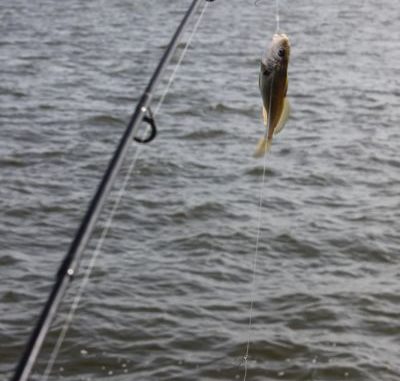
Once you have your live bait and have kept it alive all the way to your fishing area, you will have to rig and present your bait properly to be successful.
Capt. Tim Ursin, aka Capt. Hook, has been putting his charter clients on fish using live bait for the past 31 years.
“In the area that I fish, east of the river, we have a large shrimp estuary and are farther from the Gulf than many areas west of the river,” Ursin said. “I think that the diet of the trout in our area is made up of more shrimp than in other areas.
“Using live shrimp in our area is very important, especially during the summer months.”
Ursin said most of his customers are more interested in catching large numbers of trout and not necessarily just catching “big trout,” and this makes using live shrimp the perfect bait. Ursin mostly fishes relatively shallow water, around 8 feet deep, and almost always fishes live shrimp under a popping cork and an 18-inch leader.
He normally hooks shrimp through the head (under the horn) in front of the black spot. Sometimes he will hook the shrimp through the back — if the fish are striking short.
If a customer requests croakers, he will buy them and hook them through the eyes, lips or under the dorsal fin.
Ursin said trout will hit a croaker to kill it, and then come back and eat it — so do not set the hook until you feel the second strike.
Other experts almost always rig their live bait on a Carolina rig.
Free-lining live bait is another method when the current is not strong. A free-line rig is simply a hook with live bait and maybe a split shot or two a foot above the hook to get the bait down from the surface.
In deeper water with obstructions on the bottom, a sliding cork rig is often used. This rig is similar to a Carolina rig, but has a sliding cork above the weight and a bobber stopper on the line that can be set to any depth.
One very important technique when fishing live bait is to let the bait naturally drift with the current. This means the bait should be cast upcurrent or cross current and the tide should be allowed to move it downcurrent.
If you are fishing a Carolina rig, you should gently lift the bait off of the bottom periodically so it can continue to drift downcurrent.
Once the bait is at the end of the drift, it should be reeled in and then recast up current.
